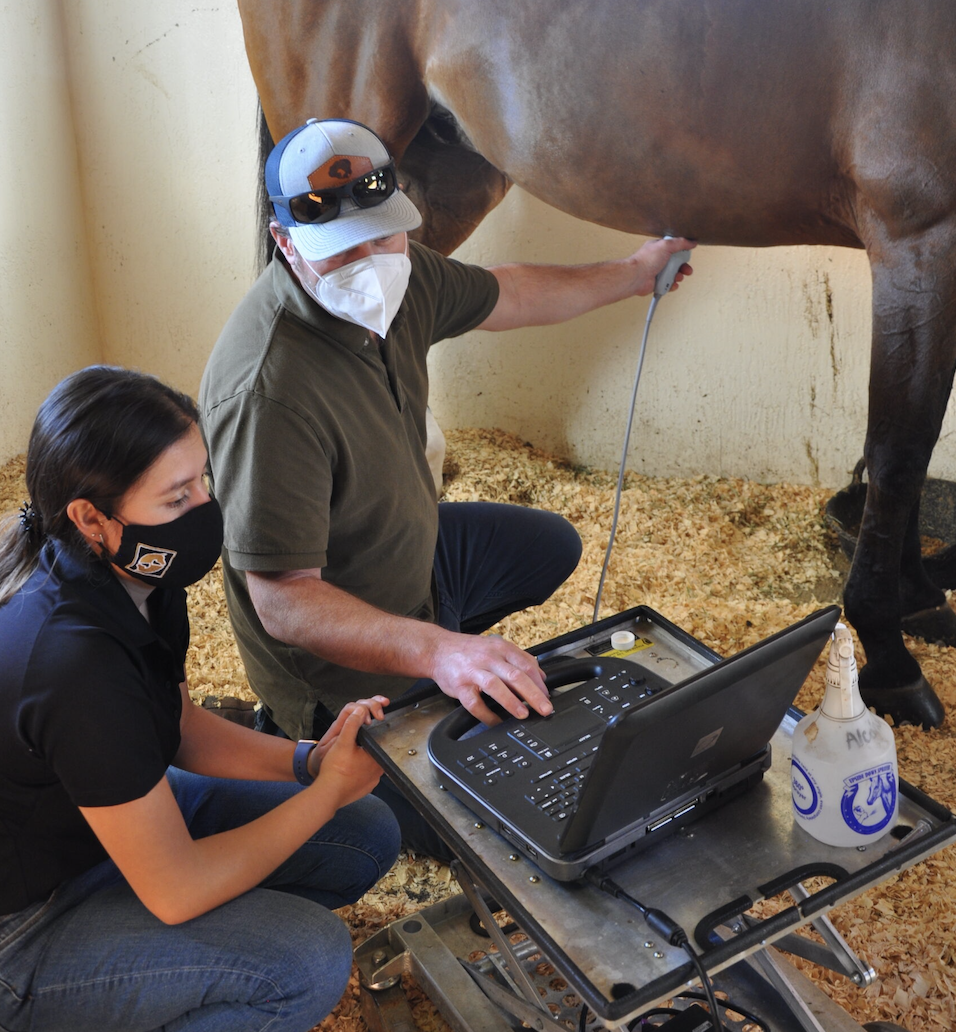Equine ulcers are a common concern for horse owners. In order to effectively treat and prevent equine ulcers, it is important for owners, managers, riders, and grooms to understand the types, symptoms, and causes. Keep reading to find out more about equine ulcers courtesy of Palm Beach Equine Clinic in Wellington, FL.
What are equine ulcers?
Equine ulcers are sores that form on the stomach lining of a horse. They can be broken down into three categories: gastric ulcer disease of the squamous mucosa, gastric ulceration of the glandular mucosa, and colon ulcers of the right dorsal colon.
Equine gastric ulcer disease of the squamous mucosa refers to ulcers found on the stomach’s inner lining and are mainly caused by exposure to stomach acid. This type of ulcer is often seen in performance horses due to exercise and abdominal pressure.
Gastric ulceration of the glandular mucosa is often found on the stomach lining around the pyloric region closer to the intestines. Ulcers found here are typically caused by stress.
Similarly, the last type of equine ulcer, which is found in the colon, is also mainly due to stress.
What are the symptoms?
Symptoms of equine ulcers often do not present the same way in every horse. The signs can also range from mild to severe. A few major symptoms to look for are poor appetite, attitude changes, decreased performance, poor body condition, and weight loss.
How do veterinarians diagnose equine ulcers?

Photo courtesy of Palm Beach Equine Clinic
There are a variety of diagnostic tools that veterinarians use for equine ulcers. One option is a Succeed test which is a fecal test that helps indicate the presence of ulcers. Another option is to perform a gastroscopy to see the stomach where both forms of gastric ulcers are found. Ultrasound is the primary diagnostic tool to look for thickening of the right dorsal colon wall indicating ulceration in the colon. Basic bloodwork to determine total albumin, a protein made by the liver, also helps indicate more severe cases of colon ulcers.
How are equine ulcers treated?
Since each type of equine ulcer has a different underlying cause, the treatment is different. Omeprazole paste is a common treatment option for equine ulcers. Veterinarians may use this in conjunction with other medications depending on the type of ulcer. For horses that have ulcers of the squamous mucosa it is common to add a dose of sucralfate before meals to the horse’s treatment plan. If the horse has ulcers in the glandular and pyloric region of the stomach, misoprostol and prostaglandin analog is used. For ulcers of the right dorsal colon, sucralfate is used as a coating agent while misoprostol is used as a treatment.
How can they be prevented?
In addition to medication, lifestyle changes can also help horses recover from equine ulcers and prevent them from reoccurring. Providing a more stress-free environment or allowing the horse to have downtime after competition can help. Also, turnout and giving your horse grazing time are extremely important for horses that are prone to ulcers.
Ulcers are a common problem in performance horses due to stress and constant exercise. Understanding the basics of ulcers will make it easier for you to quickly identify them and help prevent them for a happier, healthier horse. For a more in-depth explanation of equine ulcers, click HERE to read the full article from Palm Beach Equine Clinic.
Have questions about utilizing BarnManager or want to give it a try for yourself? Request a live demo here!



